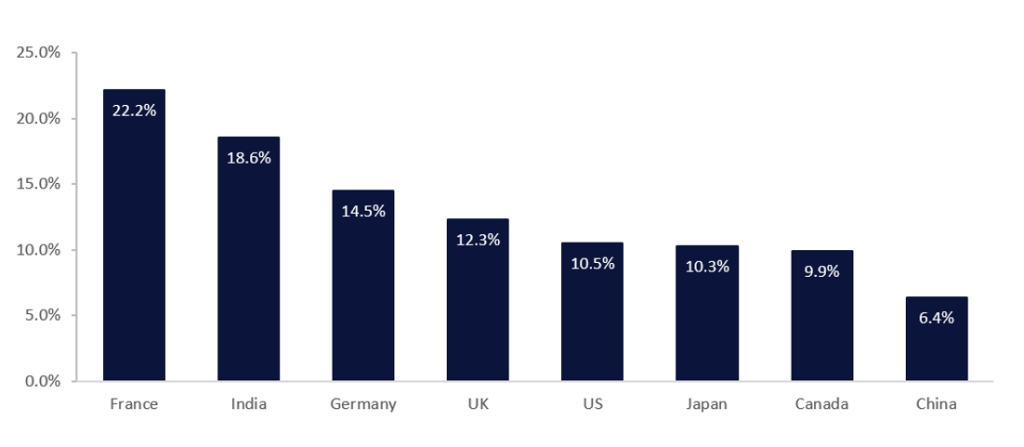Products combining permanent life insurance and
long-term care benefits have been around in the US for many years,
but had generated relatively low interest. This has changed in the
wake of the financial crisis with the products finding eager
takers, even among younger consumers. Charles Davis
reports.
 It took a tumultuous equities
It took a tumultuous equities
market and a mortgage collapse of epic proportions, but combination
products have finally burst onto the scene in the US.
Combo products – also referred to
as asset-based long-term care insurance or linked benefit products
by US insurers – began 15 years ago as little more than life
insurance with long-term care riders added for a marketing twist.
Along the way, some annuities began offering a long-term care
option as well.
Lost in the boom markets, today
combo products offer an attractive layer of protection for
equities-weary consumers – and with the 2006 Pension Protection Act
in effect since 1 January 2010, consumers enjoy additional tax
benefits when they use the funds in a combination life or annuity
product for long-term care expenses, offering combo products a huge
surge of momentum.
Combination products are built on
permanent life insurance policies, predominately universal life and
whole life. Most are purchased on a single premium basis.
Combination products tend to fall into several basic categories
from so-called “bare-bones” policies to linked policies.
How well do you really know your competitors?
Access the most comprehensive Company Profiles on the market, powered by GlobalData. Save hours of research. Gain competitive edge.

Thank you!
Your download email will arrive shortly
Not ready to buy yet? Download a free sample
We are confident about the unique quality of our Company Profiles. However, we want you to make the most beneficial decision for your business, so we offer a free sample that you can download by submitting the below form
By GlobalData
Choosing the right
product
Bare-bones policies feature an accelerated death benefit rider
that allows the policyholder to access cash value to cover the cost
of long-term care, while linked policies package whole life,
universal life or even variable universal life with long-term care
benefits that can be drawn independent of the underlying insurance
contract.
Now linked benefit products that
couple life insurance with long-term care benefits are more popular
than ever, and as insurers enjoy success with life insurance
combos, they inspire future annuity combination products.
But the bottom line is that there
is only one way policyholders can get gains in their annuity
contract out on a tax-free basis, and that is if those
accumulations are paid out as long-term care benefits.
Self-insurance plays a central role
in combo products. In annuity combinations, the first layer of
coverage is provided by the payout of the account value – in other
words, money that belongs to the policyholder. In life
combinations, the face amount pays for long-term care benefits,
with a portion of those payouts coming from the cash value.
Paying for long-term care costs in
this manner dramatically reduces the cost of coverage when compared
with a standalone long-term care insurance policy. A long-term care
rider on an annuity typically costs less than $1,000 per year. That
is a huge savings compared to standalone long-term policies, which
helps overcome the most common objection faced by long-term care
insurance producers, that of the prospect who believes they may not
ever need the benefits paid by a standalone long-term care
insurance policy.
Combo products also are a good fit
for first-time life insurance buyers who may be young enough that
they do not want to spend the extra money on long-term care
insurance, but seek some level of long-term care protection.
According to the first national
study of combination product buyers by the American Association for
Long-Term Care Insurance, nearly half of all individuals purchasing
asset-based long term care insurance in 2008 were younger than
65.
Linked benefit products also tend
to resonate with wealthy clients who had been planning to
self-insure their long-term care risk but who see the wisdom of
leveraging their dollars with a life insurance policy that also
protects their wealth from eroding due to long-term care costs.
Solutions for long-term
objections
Combination products can answer many of the most common client
objections to traditional long-term care products. A
return-of-premium feature speaks to clients concerned their premium
would be wasted if they never need care. There is simplified
underwriting for people whose health prevents them from qualifying
for traditional long-term policies or who are unwilling to subject
themselves to full underwriting.
There are flexible premiums for
people who lack the liquidity to fund a policy upfront. And there
is a single-premium option for clients who worry about rate
increases over time. What is more, if a policyholder never taps the
policy for long-term care coverage, their beneficiaries still get
the full death benefit.
Sales of combo products can be
expected to climb this year because of some provisions of the
Pension Protection Act of 2006 that went into effect in January,
including approval of long-term care riders on annuity contracts.
Formerly, these riders were specifically allowed for life insurance
policies but not annuities. Now it’s clear that long-term care
riders can be added to annuities without losing the tax deferral of
annuities or some tax-free insurance benefits of most long-term
care insurance policies.
The law now also allows tax-free
access to cash values for long-term care coverage. Before the law
took effect, when insurance or annuity cash values were tapped to
pay for long-term care coverage, the consumer owed tax on the money
moved from one side of the combo product to the other, as if a
distribution from the insurance policy or the annuity had occurred.
Now such internal transactions will not generate income tax.
All of this combines to create a real opportunity for long-term
care combo products, a compelling blend of protection and death
benefits for a rapidly aging nation struggling with the cost of
end-of-life care.







